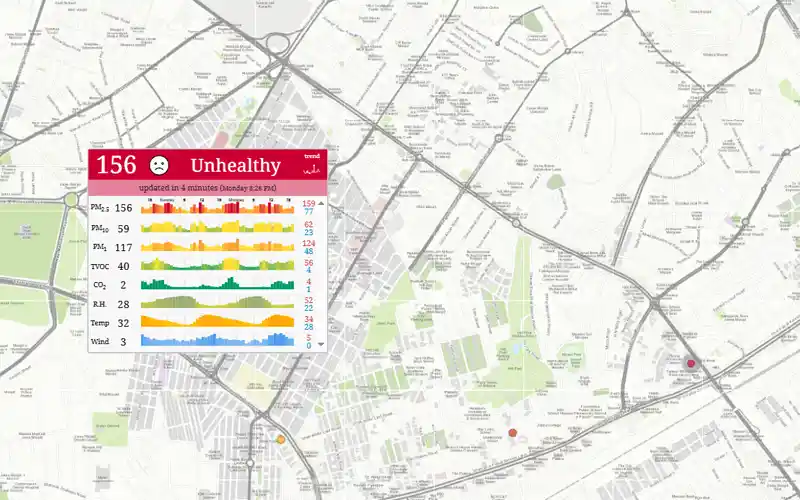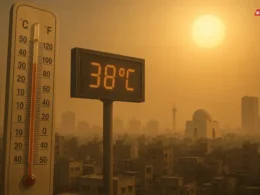The city’s air quality has reached unhealthy levels, according to the latest Karachi air quality index report updated Monday evening at 8:19 PM, raising serious health concerns.
Air pollution monitoring data revealed PM2.5 readings ranging between 87 and 190 micrograms per cubic meter – levels considered hazardous for sensitive groups, including children, elderly citizens, and people with respiratory conditions.
The highest PM2.5 reading of 190 was recorded at Shahrae Faisal (Baloch Colony, Westland Trade Center), indicating extremely poor air quality in the city’s busiest commercial corridor.
In Jamshed Town, pollution levels remained troubling, with Urban Unit Karachi reporting 146 and the Climate Action Center measuring 94.
In Saddar Town, Zafar Memon DHA recorded 73, while DG House DHA 5 registered 105. The NED University City Campus in the same town also reported the reading of 108.
To stay informed about current Karachi Air Quality, visit TOK Weather Page
The Karachi Metropolitan Corporation monitoring site in Keamari Town showed a PM2.5 level of 105.
In Gulshan-e-Iqbal Town, the Aga Khan University Main Campus recorded 140, while the Aga Khan IED Campus measured 107 air quality levels.
The NED Main Campus and Gulistan-e-Johar reported 111 and 115, respectively.
Furthermore, North Nazimabad Town registered the PM2.5 levels of 108, while the Orangi Pilot Project in SITE Town recorded 138.
Experts warn that prolonged exposure to PM2.5 can lead to serious respiratory, cardiac, and neurological problems. Citizens are advised to stay indoors, wear N95 masks outdoors, and avoid physical exertion.
How many categories are there to measure Air Quality?
AQI 0–50: Good
The air quality is considered excellent, with minimal or no risk to public health. There are no necessary precautions for the general population.
AQI 51–100: Moderate
Air quality is generally acceptable; however, there may be a slight health concern for a small number of individuals who are unusually sensitive to air pollution. Active children, adults, and people with respiratory conditions like asthma should consider limiting prolonged outdoor activity.
AQI 101–150: Unhealthy for Sensitive Groups
Sensitive individuals, such as those with asthma or other respiratory issues, may begin to experience health effects, although the general population is unlikely to be affected. It is advised that active children, adults, and those with respiratory conditions limit extended outdoor exertion.
AQI 151–200: Unhealthy
Health effects may begin to affect everyone, with sensitive groups potentially experiencing more serious symptoms. Active children and adults, and people with respiratory illnesses should avoid prolonged outdoor activity, while others—especially children—should reduce outdoor exertion.
AQI 201–300: Very Unhealthy
This range signals emergency-level health warnings. The entire population is more likely to experience adverse health effects. Those with respiratory conditions and active individuals should avoid all outdoor activity, while everyone else, particularly children, should limit time spent outdoors.
AQI 300+: Hazardous
Air quality is extremely poor, posing a serious risk to health for everyone. A health alert is in effect, and all outdoor exertion should be avoided by the entire population.











